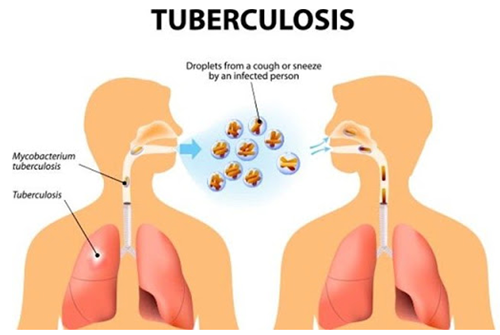
Tuberculosis (TB) is an infectious disease that remains a health problem worldwide. Approximately 75% of TB patients are in the economically productive age group, and it is estimated that an adult TB patient will lose an average of 3 to 4 months of work time. The main causes of the increasing burden of TB include poverty, high economic growth but with too wide disparities, demographic changes, other health problems, the impact of the HIV pandemic, and multidrug-resistant TB.
Tuberculosis (TB) is an infectious disease caused by the TB germ (Mycobacterium tuberculosis). Most TB germs affect the lungs, but they can also affect other organs such as bones, intestines, glands, skin, and others. The transmission of pulmonary TB can occur when a TB patient coughs or sneezes, and the germ is then spread into the air in the form of droplet nuclei. A single cough can produce around 3000 droplet nuclei. The degree of transmission is determined by the amount of germ released from the lungs. Transmission generally occurs in a room where droplet nuclei remain for a long time.
The diagnosis of TB can be established based on clinical symptoms, physical examination, sputum examination, radiological examination, and other supportive examinations. The clinical symptoms of TB are divided into two groups, namely systemic and local symptoms (according to the affected organ). Respiratory symptoms include cough for more than 2 weeks, coughing up blood, shortness of breath, chest pain, fever, night sweats, anorexia, and weight loss.
Tuberculosis is transmitted through the air when a patient coughs, sneezes, or talks without covering their mouth and using a mask so that the TB germ is automatically released into the surrounding environment or can be directly inhaled by others, enter the respiratory tract to the lungs and can spread to other parts of the body.

The goal of treatment is to cure and improve productivity and quality of life, prevent death from TB, prevent relapse, reduce TB transmission, and prevent drug-resistant TB. TB treatment includes an initial phase and a continuation phase. The initial phase lasts for 2-3 months, followed by the continuation phase for 4 or 7 months using a combination of main and additional drugs.
If you experience respiratory problems as described in the clinical presentation of tuberculosis, consult your specialist doctor immediately to be diagnosed and treated as soon as possible. Early treatment will provide better therapeutic results.